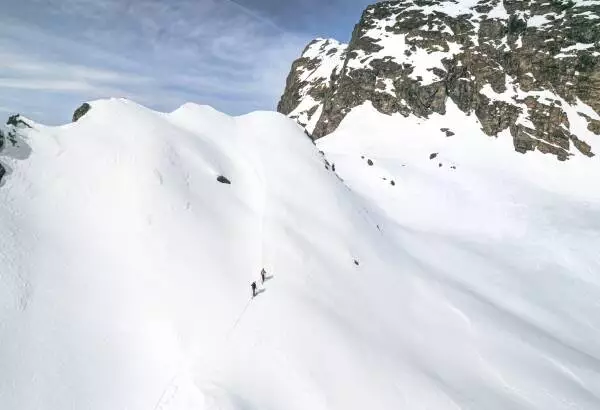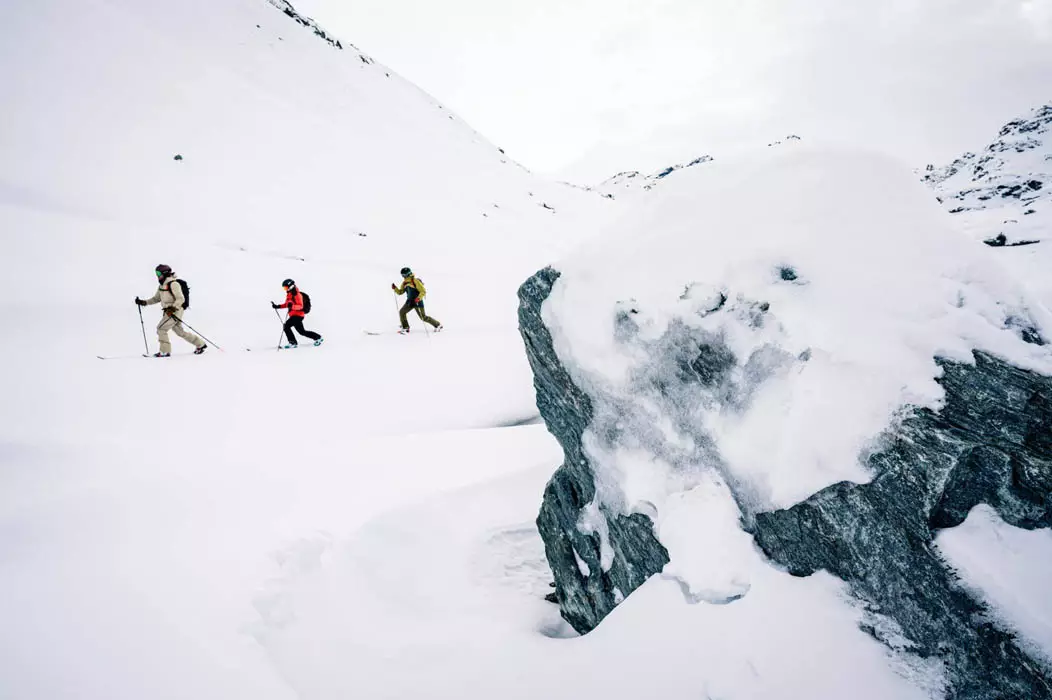In a world of growing environmental awareness, it's essential to rethink the way we travel and enjoy the great outdoors.
Most of the ways we travel to get to the slopes have a high carbon impact. “57% is the share of greenhouse gas emissions for which transport is responsible on a ski resort's balance sheet. Transport is by far the major issue on which we must act to protect our mountains”.
Source: Pow France https://protectourwinters.fr/se-deplacer/
Inwild participated in the "car-free adventures" fundraising campaign launched by Pow France and OSV "WE ACT." This initiative aimed to promote sustainable mobility in mountainous regions using a range of tools.
Car-free adventures: an eco-friendly way to travel the world
As a reminder, “Car-free adventures” is a comprehensive, cross-functional project that tackles the issue of mobility across a broad, operational spectrum, with the ambition of making mountain areas leaders in sustainable mobility.
The objectives of this campaign:
- Create a new sustainable vision for mountain access. By crafting inspiring and environmentally friendly visuals for the outdoor enthusiast community.
- Equip those who aspire to this new eco-conscious lifestyle. By providing the necessary tools to access the mountains without using a car.
- Advocate for new eco-friendly mobility options and practices in and around the mountains. By engaging our community and launching advocacy and activation campaigns with local mobility management authorities.
Find out more about our environmental partnerships on this page: https://inwildoutdoor.com/fr/inwild/engagement/partenariats.
One way of rethinking the way we travel is to combine cross-country skiing and bikepacking, two practices that offer an immersive adventure while reducing our impact on the planet.
In this article, we explore how combining these two activities can contribute to a more sustainable and rewarding experience, highlighting the positive carbon impact of cycling compared to driving.
Ski touring and bikepacking : a natural alliance
Ski touring and bikepacking, when combined, provide a versatile and environmentally friendly adventure. Picture yourself gliding across the snow on skis, then transitioning to the winding trails on your bike. This method of travel, known as ski-biking, offers a sporty and eco-conscious way to reach the snow-capped mountains directly from your home without using a car. The journey can be undertaken in several ways: you can bike from your home to the start of your hike and then proceed to the summit on skis, or you can simplify the trip by taking a train or shuttle bus to the trailhead. However, you will need special, adjustable cycling equipment for this adventure.

© Pierre Allaire
Choosing the right bikes
First and foremost, selecting a bike that's suited to the conditions is crucial. A mountain bike or gravel bike, with or without electric assistance, is ideal for navigating rough and snowy roads. For approach climbs on roads, a road bike or mountain bike works best.
Choosing suitable tyres is essential for maintaining stability on slippery surfaces. Additionally, brakes should be adjustable and reliable to ensure safe descents.
Bike Accessories
Essential bike accessories include sturdy, adjustable bike panniers for carrying your ski equipment and personal items. For multi-day adventures, consider a waterproof handlebar bag to keep your bivouac gear dry, a large saddle bag for your clothing, and a frame bag for your food and tools. Additionally, a ski rack system is crucial for transporting your skis seamlessly on your bike.
Opt for waterproof materials like nylon or polyester for added durability. Choose accessories with reflective straps and zippers to enhance your visibility and safety during night travel.
In the mountains
In the mountains, once you reach a snow-covered area, bikepacking transitions into ski touring. You can secure your bike with a sturdy lock or conceal it in a forest out of sight before switching to skis. The gear from your bikepacking bags, such as your climbing skins, knives, and picnic items, should be transferred into your rucksack.
The combination of ski touring and bikepacking not only enhances your cycling and skiing experience but also serves as a sporty and eco-friendly approach, eliminating the need for a car during the approach phase of your winter tours.
With careful preparation and the right equipment, you can fully enjoy the pleasures of both activities while minimizing your impact on the environment.
Mountains, snow, and cycling
The eco-friendly benefits of bikepacking
Opting to travel by bike in the mountains helps minimize your carbon footprint and contributes to a healthier environment. Unlike motorized vehicles, bikes leave no harmful traces on snow-covered paths, helping preserve the pristine nature of the mountain landscape. Additionally, the absence of engine noise maintains the tranquillity of the surroundings, allowing you to fully immerse yourself in the serene calm of winter. Bicycles also cause less disturbance to wildlife, which supports biodiversity and sustains mountain ecosystems.
Ski touring - a greener choice
As we witness the environmental challenges faced by traditional ski resorts, turning to lower-impact winter sports like ski touring not only preserves the conditions of our mountain environments but also ensures a more sustainable and fulfilling winter holiday experience. Despite the love many express for the scenic beauty of downhill skiing, the environmental impact of this sport is significant and growing.
To maintain ski conditions, resorts worldwide have become heavily reliant on artificial snow, which not only consumes vast amounts of energy but also harms local vegetation due to chemical additives. The physical alterations to the landscape, such as grading the snow and expanding resort infrastructures, further degrade the environment and disrupt local ecosystems.
Ski touring, on the other hand, offers more sustainable alternatives. This activity requires minimal infrastructure and thus has a much lower environmental footprint. It does not rely on artificial snow or extensive grading of slopes and maintain the natural beauty and tranquillity of winter landscapes. Additionally, this form of skiing encourage a genuine connection with nature, allowing enthusiasts to enjoy the quiet and beauty of snowy forests and mountains without the intrusive noise and pollution associated with downhill skiing.

© Guillaume Borga
Promoting sustainability: tips and best practices for ski touring and bikepacking
By combining ski touring and bikepacking, adventurers can not only connect with nature on a deeper level but also champion sustainability and environmental protection. Here are a few tips for an even greener adventure:
Responsible planning: select routes that minimize environmental impact, steer clear of ecologically sensitive areas, and adhere to local regulations.
Pack light: reduce your ecological footprint by bringing only essential gear and choosing sustainable, eco-friendly products
Waste management :follow leave no trace principles by carrying out all your waste, ensuring you leave the environment untouched.
Share your experience: raise awareness about the importance of sustainable practices by sharing your journey and encouraging others to embrace eco-friendly habits.
Combining ski touring and bikepacking is much more than a simple outdoor adventure: it's a commitment to sustainability and the preservation of our planet.
By choosing cycling as their preferred means of transport and adopting environmentally-friendly practices, adventurers can enjoy nature responsibly while contributing to a more sustainable future for all.




